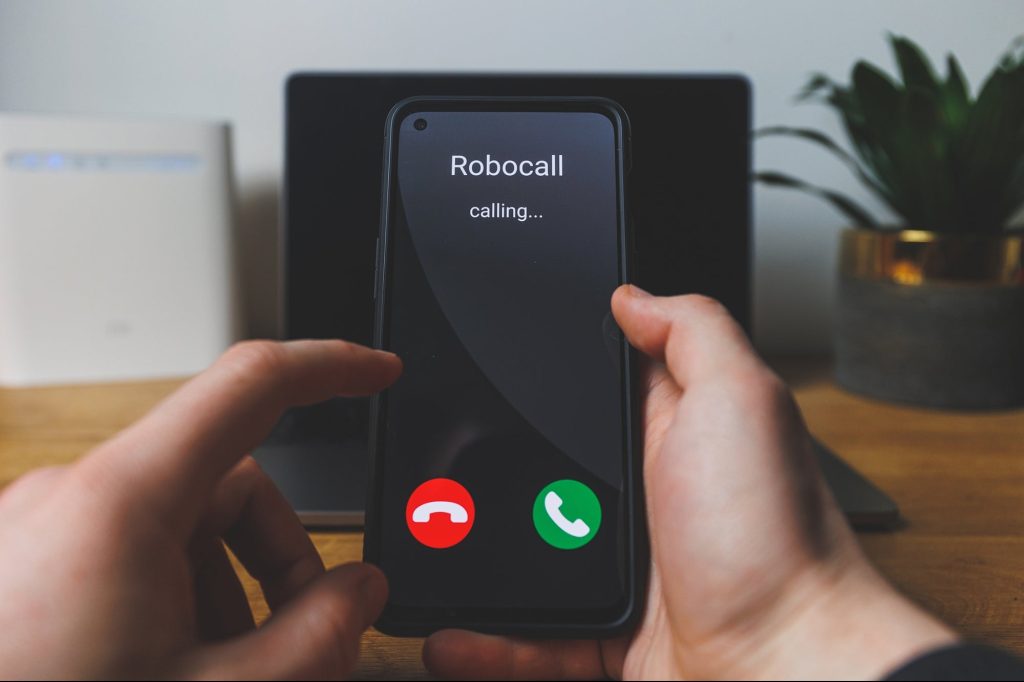In 2019, Congress passed the TRACED Act to give the Federal Communications Committee (FCC) additional tools to combat robocalls. It’s a problem plaguing public sector call centers and constituents; people still receive millions of robocalls (automated or pre-recorded messages) and scam calls (made by criminals) every year in the U.S.
It is incumbent that government agencies utilize the technological tools available today to combat fraudulent, phone-related activity, boosting public trust and the constituent experience.
The not-so-smartphone problem
The household landline is steadily declining; roughly one-third (37%) of homes still have one. In an incredible technological revolution, smartphones have become the preferred telephone device for most homes and individuals. Smartphones are powerful, but their ability to root out scam calls is still decidedly inefficient. Today’s smartphones don’t pull caller ID data from a centralized registry of phone numbers. Instead, they rely on information from your contact list to identify incoming calls. Essentially, you tell your phone who’s calling — not the other way around.
Most people don’t realize cell phones lack a caller ID, causing problems for public agencies trying to reach beneficiaries or constituents. To deal with the over 3 billion spam calls received per month, most people simply ignore numbers they don’t recognize.
Due to this breakdown in public trust, many government agencies won’t initiate contact via phone. Rather, they’ll return calls from consumers who request help. However, if a recipient misses a call, they’re faced with the daunting prospect of returning it — only to navigate endless menus and jump through hoops to reach a live person on the other end. The result is a further breakdown in trust and loss of confidence in the efficacy of public sector call centers.
Phone service providers have developed technical ways to alleviate the problem of eroded trust. Many major providers employ a certification system for phone numbers registered to customers. This development resulted from the STIR/SHAKEN caller identification framework set forth by Neustar Management and mandated by the FCC as part of the TRACED Act.
With caller ID authentication standards like STIR/SHAKEN, phone service providers verify a caller’s actual number matches the caller ID information, enabling higher trust for the receiver of the call. It’s a small step, but it indicates how the public sector can better leverage technological tools to solve these problems. Unfortunately, the scammers have a vote in this process too, and they’re not going away without a fight.
Related: Rising AI Threat Sounds Like Your Loved One on the Phone — But It’s Not Really Them
Robocalling isn’t going anywhere
Robocalls and scam calls aren’t subsiding anytime soon — they’re too lucrative for the fraudsters who perpetrate them. In 2021, fraudulent calls cost Americans over $29 billion. Without positive identification in the form of verified caller ID, the public is never sure they’re talking to a legitimate service. The result is a concerning loss of trust in government call centers.
Fraud doesn’t stop at government call centers. Law enforcement agencies have seen an alarming jump in a spoofing technique known as swatting. The basic concept is the same, but the agency is the initial victim of the scam — with potentially deadly consequences for those whom agencies are charged with protecting.
Many government call centers have tried to combat spoofing practices by eliminating initial contact with customers via telephone, but millions of people fall for these scams every year. Some agencies send public reminders that they won’t call about an issue, but scammers make their calls convincing enough to succeed.
Related: How To Avoid Spam Calls And Focus On Important Ones
How technology can help
All is not lost. Scam calls are a technical problem that requires a technical solution. There are many tools public agencies and private organizations can implement to rebuild trust with consumers. One example is emerging technology in providing better caller ID by applying a token to verified phone numbers or displaying a branded logo on the receiver’s phone. Services like this allow organizations to ensure outbound calls aren’t mislabeled as spam calls or blocked by the telephony system and that they actually originate from the correct entity.
It’s similar to your fingerprint: difficult to fake and uniquely tied to your identity. Calls can be certified as they’re routed by verifying the phone number belongs to the person (or call center) placing the call.
Major cell phone providers often use each other’s databases as trusted sources, too, so this tool isn’t limited to a single provider. It can also stop spoofed outbound calls at the source and identify likely fraudulent calls so people can screen them appropriately.
Another emerging caller ID technology has worked remarkably well for the Virginia Department of Health (VDH). During the height of COVID-19, the VDH reached out to patients and close contacts daily. When only an unidentified phone number was displayed, many calls went unanswered, wasting the department’s time and resources.
When the VDH branded the calls as they displayed on recipients’ phone screens, presenting the department’s logo and name on the recipient’s smartphone, its first-time answer rate jumped 105% almost immediately.
Related: This Saas-Based Startup Is Disrupting Call Centre Market With AI-Based Voice Bots
Tools to repair trust
Scammers are constantly innovating, but the technology sector innovates alongside them. Call carriers, third-party service providers and the federal government continue to develop new anti-spoofing tools, processes and policies to protect consumers — and public sector agencies must be sure to use them. Through constant vigilance, they can combat fraudulent phone calls, bolster public trust and improve the customer service experience.
Read the full article here










